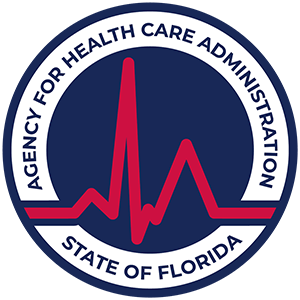Addiction and Injuries: The Connection in Between
"Explore the connection between addiction and injuries, plus treatment options to break free. Your healing journey starts here."
Addiction and Injuries
An often-overlooked aspect of addiction is the significant impact it has on the occurrence of injuries. Understanding the connection between substance use and various types of injuries can provide valuable insight into the multi-dimensional effects of addiction.
Impact of Substance Use on Injuries
Substance use disorders can have detrimental effects on an individual's well-being, notably contributing to a higher risk of injuries. A study conducted by NCBI found that substance use was involved in 5.5% of acute injuries seen in the emergency department between November 1st, 2016 and October 31st, 2017.
Substance abuse impairs judgment, coordination, and reaction time, significantly increasing the risk of accidents such as falls, burns, and motor vehicle collisions. Moreover, patients reporting alcohol use were almost four times more likely to report an intentional injury, while those reporting alcohol combined with other drugs were nearly 18 times more likely to report such an injury [2].

Types of Injuries Associated with Addiction
It's not just the risk of injury that increases with addiction; the types of injuries can vary significantly. For instance, burns, head injuries, and polytraumas were more prevalent when drugs or alcohol were involved in the injury [3].
Substance abuse can contribute to an increased risk of violence-related injuries, including physical harm to the individual and others, due to alterations in behavior and impaired decision-making. Moreover, addiction can lead to self-destructive behaviors, such as cutting, burning, or excessive drug use, resulting in serious injuries.
Understanding the profound impact of addiction on the incidence of injuries is crucial in developing effective prevention strategies and treatment plans. By addressing the root cause of these injuries, it's possible to significantly reduce their occurrence and help individuals on their path to recovery.
Addiction and Health Effects
Understanding the connection between addiction and health effects provides a holistic perspective on the impact of substance use on an individual's wellbeing. This involves exploring the physical consequences of addiction and the behavioral implications linked to injury risk.
Physical Consequences of Addiction
Addiction exerts a substantial toll on physical health, affecting various bodily systems. This includes weakened immune function, cardiovascular problems, liver damage, and respiratory issues. Such health complications increase the susceptibility of individuals to injuries [1].
Excessive alcohol consumption presents its own set of physical threats. For men, drinking more than four drinks on any day or over 14 in a week is deemed excessive. For women, heavy drinking is defined as having more than three drinks in one day or exceeding seven drinks in a week. Such behavior can escalate the risk of injuries or accidents and lead to liver problems or more serious alcohol disorders.
Abuse of prescription and over-the-counter (OTC) medicines can also result in physical health issues. Misuse of certain types of prescription drugs is common, and high doses of cough and cold medicines containing dextromethorphan can induce a state of drunkenness or intoxication.
Behavioral Impacts on Injury Risk
Behavioral changes induced by substance abuse significantly contribute to injury risk. Substance abuse can impair judgment, coordination, and reaction time, leading to a higher risk of accidents such as falls, burns, and motor vehicle collisions.
On a more destructive note, addiction can give rise to self-harming behaviors like cutting, burning, or excessive drug use, which in turn result in serious injuries.
Substance abuse can also increase the risk of violence-related injuries due to alterations in behavior and impaired decision-making. This encompasses physical harm to the individual and others [1].
Driving under the influence of marijuana is as dangerous as drunk driving. Excessive marijuana use can leave individuals feeling apathetic and forgetful, and may impair thinking and decision-making processes [4].
The behavioral impacts of cocaine and heroin usage also increase injury risk. Cocaine can lead to fast talking, moving, or thinking and intense cravings for the drug. Heroin usage can result in slowed movement and thinking, chills, nausea, and nervousness accompanied by a strong urge to use more to feel better [4].
Understanding the physical and behavioral health effects of addiction is critical in designing effective treatment strategies. These insights can help shape public health strategies to combat the problem of addiction and its associated injuries.
Vulnerable Populations and Addiction
Certain populations may be more susceptible to addiction and related injuries due to various socio-economic and genetic factors. Understanding these factors and addressing addiction in these at-risk groups is essential to mitigating the impact of substance use disorders on these communities.
Factors Influencing Vulnerability
Vulnerable populations, which include individuals with disabilities, socially or economically disadvantaged demographic populations, and racial/ethnic minorities, may be at heightened risk of experiencing substance or behavioral addictions. Factors such as genetic and neurobiological markers, unemployment, poverty, and poor connection to one's community may contribute to this vulnerability.
These groups may seek out alternative means of coping with stressors or may be subject to non-normative routes of socialization, which can put them at particular risk for addiction. Challenging conditions at the intrapersonal, microsocial, or macrosocial/cultural level can lead to multiple or substitute substance and behavioral addictions. Examples include adverse childhood experiences, blocked access to quality education, living within low-resource communities, and experiences of marginalization and discrimination.
Addressing Addiction in At-Risk Groups
Vulnerable populations trapped in addiction may experience negative consequences that interfere with their quality of life, such as chronic impairment, loss of energy, anxiety, depression, regret, and lifestyle dissatisfaction.
The remediation of diminished quality of life among these groups may require individual-level, group-level, and environmental-level interventions, involving policy enactment and the provision of social services. This includes extra consideration, reasonable accommodation, and legitimized protection for these at-risk groups.
One such population that requires focused attention is Native American women, who have higher rates of alcohol abuse, chronic liver disease, and cirrhosis than any other racial/ethnic group in the United States. The alcohol-related death rate among American Indian and Alaska Native women aged 35 to 44 is 67.2 per 100,000, compared to 4.9 per 100,000 for women of all races in the same age range [6].
Methamphetamine is the most common cause of admission to treatment for American Indians and Alaska Natives, followed by marijuana and cocaine/crack. Native American women initiate alcohol use at an earlier age than other racial/ethnic groups and have higher rates of cocaine dependence compared to men, while men have higher rates of marijuana and alcohol dependence [6].
Given the alarming rates of addiction and associated injuries among Native American women, intervention strategies must incorporate culturally congruent trauma-informed and integrated trauma services to build a stronger bridge to recovery. This is particularly important considering that Native American women are disproportionately affected by violent crimes, childhood sexual abuse, and physical abuse [6].
Understanding the specific vulnerabilities of at-risk populations to addiction and injuries is a crucial step in developing effective prevention and intervention strategies. By acknowledging and addressing the unique challenges faced by these populations, it is possible to reduce the impact of addiction and promote healthier, safer communities.
Treatment Options for Addiction
There are numerous treatment options available for those struggling with addiction and its associated injuries. The specific approach employed will depend on the nature of the substance involved, the level of dependency, and the support available to the individual. This section will focus on two key treatment options: Counseling and therapy, and support groups and community programs.
Counseling and Therapy
Counseling and therapy play a critical role in the treatment of addiction. They can help individuals understand the root causes of their addiction, develop coping strategies, and work towards recovery. These interventions can range from unstructured counseling and feedback to formal, structured therapy sessions.
According to the NCBI Bookshelf, brief interventions have been successfully employed for many years by professionals in various settings. They are particularly effective for individuals with at-risk substance use and less severe abuse behaviors.
Brief interventions are time-limited, structured, and oriented towards a specific goal. They can be tailored to different levels of substance use and have timelines for the adoption of specific behaviors. Despite the brevity of these interventions, they have been shown to be effective in addressing substance abuse issues in individuals who are unable or unwilling to access specialty care.
Support Groups and Community Programs
Support groups and community programs are another vital facet of addiction treatment. These programs provide a safe and supportive environment where individuals can share their experiences, learn from others who have faced similar challenges, and receive encouragement and guidance on their journey towards recovery.
Programs such as Alcoholics Anonymous (AA) and Narcotics Anonymous (NA) have proven to be an invaluable resource for individuals dealing with alcohol and drug problems. These programs offer a structured approach to recovery, with regular meetings and a strong emphasis on peer support [7].
The power of these programs lies in the shared experiences and mutual support that participants provide for each other. By connecting with others who have faced similar challenges, individuals can gain valuable insights, feel less isolated, and develop a stronger sense of hope and motivation towards recovery.
The combination of professional counseling and therapy, along with the support of community programs, can provide a comprehensive approach to treating addiction and its associated injuries. It's important to remember that each individual's journey is unique, and the most effective treatment approach will depend on their specific needs and circumstances.
Public Health Strategies
To address the challenges associated with addiction and injuries, public health strategies encompass a wide range of approaches. These strategies focus on harm reduction and preventive measures, as well as intervention programs.
Harm Reduction Approaches
Harm reduction services play a critical role in preventing drug-related fatalities and injuries, increasing access to healthcare, social services, and treatment. Furthermore, they help decrease overdose fatalities, acute life-threatening infections related to unsterile drug injection, and chronic diseases like HIV and hepatitis C.
One notable example of a harm reduction approach is the Overdose Education and Naloxone Delivery (OEND) program at syringe services programs. This program has significantly reduced death rates, making the scaling of these efforts a priority strategy to ensure adequate availability of naloxone [8].
The Substance Abuse and Mental Health Services Administration (SAMHSA) recently awarded 25 grants for its Harm Reduction grant program. This initiative distributes up to $9,750,000 per year (or $29,250,000 over three years) to increase access to community harm reduction services, prevent overdose deaths, and reduce health risks associated with drug use [8].
Preventive Measures and Intervention Programs
Preventive measures and intervention programs are vital strategies in mitigating the impacts of addiction and injuries. Brief interventions for substance abuse problems have been in use for many years by various professionals and in different settings, such as social service agencies, hospital emergency departments, court-ordered educational groups, and vocational rehabilitation programs. They are particularly effective for individuals with at-risk use and less severe abuse behaviors [9].
Brief interventions can involve a variety of approaches, ranging from unstructured counseling and feedback to formal structured therapy. These interventions are time-limited, structured, and directed toward a specific goal. They can be tailored to different levels of substance use and have timelines for the adoption of specific behaviors.
Evidence suggests that brief interventions can be effective in reducing alcohol consumption and associated problems for at-risk and problem drinkers. They have also been successful in motivating alcohol-dependent patients to enter specialized alcohol treatment.
In summary, public health strategies, including harm reduction approaches and preventive measures and intervention programs, play a crucial role in addressing addiction and injuries. These strategies provide a comprehensive approach to not only reduce the risks associated with substance use but also foster an environment that supports recovery and reintegration into society.
Statistics and Cost Analysis
Understanding the scale of the issue of addiction and injuries, and the associated costs, is crucial for setting appropriate health policy priorities and interventions. This section will provide an overview of the prevalence of substance use disorders in the U.S., as well as the economic burden and treatment disparities associated with these disorders.
Substance Use Disorders in the U.S.
Substance use disorders have a wide-reaching impact on American society, affecting millions of individuals every year. According to the National Institutes of Health (NIH), substance misuse results in 47.7 million Americans using an illicit drug or misusing a prescription medication, 66.7 million binge drinking, and 27.9 million self-reporting driving under the influence (DUI) in the past year.
The consequences of these actions include motor vehicle crashes, crimes, injuries, reduced quality of life, impaired health, and far too many deaths. The enormity of these figures underscores the urgent need for effective prevention and treatment strategies.
Economic Burden and Treatment Disparities
The economic burden of substance use disorders is staggering. These disorders are estimated to cost society $442 billion each year in health care costs, lost productivity, and criminal justice costs. More than 10 million full-time workers in the U.S. have a substance use disorder, further highlighting the economic impact of this issue.
Despite the sizable economic burden, a significant treatment gap exists. Only 10.4 percent of individuals with a substance use disorder receive treatment, and only about a third of those individuals receive treatment that meets minimal standards of care.
These statistics highlight the urgent need to address the issue of substance use disorders in the U.S. By expanding access to quality treatment, we can not only improve the lives of those affected by these disorders, but also significantly reduce the associated economic burden. The challenge lies in bridging the treatment gap and ensuring that those who need help receive the necessary care.














.svg)








